
Deutsch-Chinesische Enzyklopädie, 德汉百科
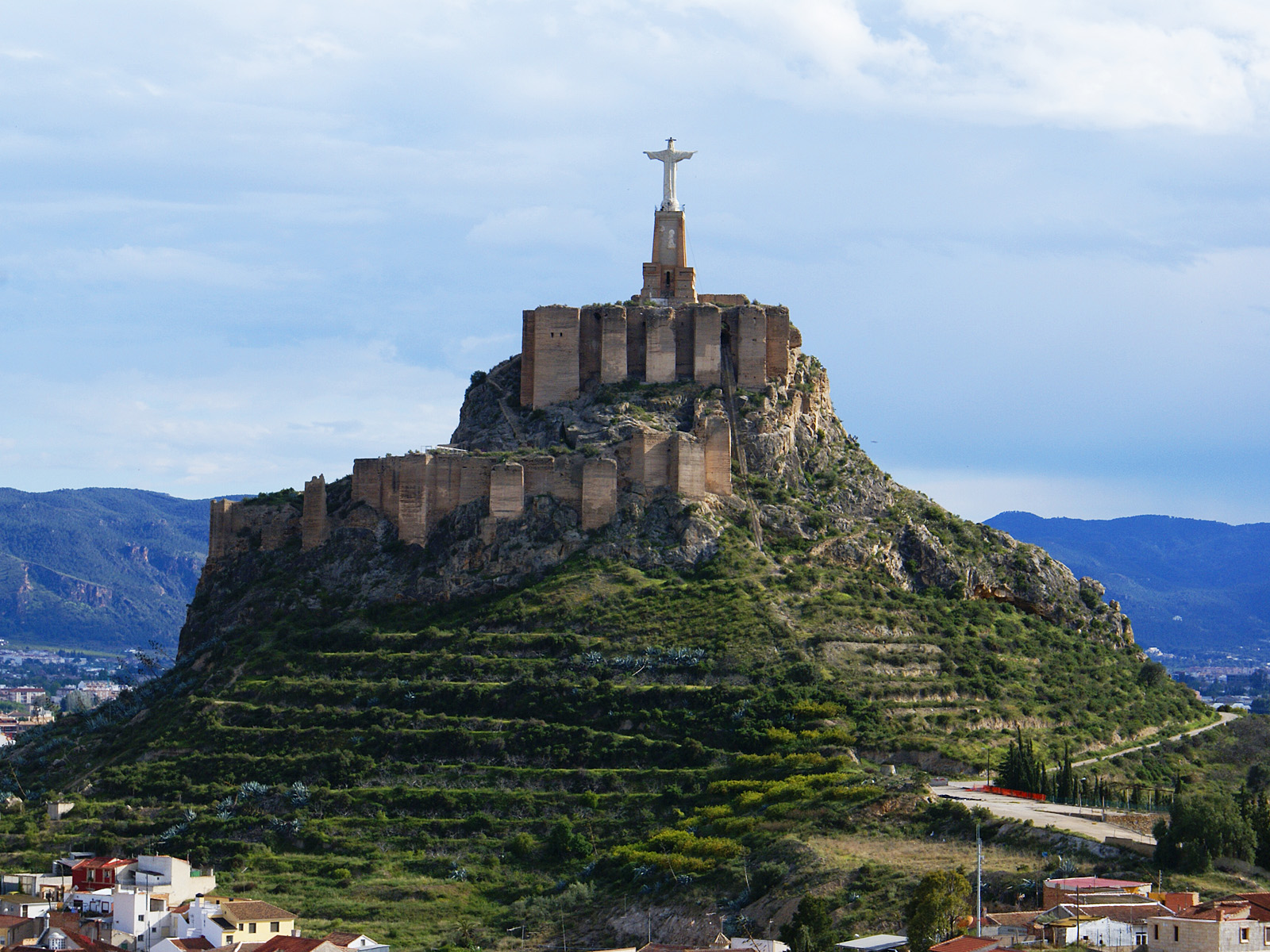
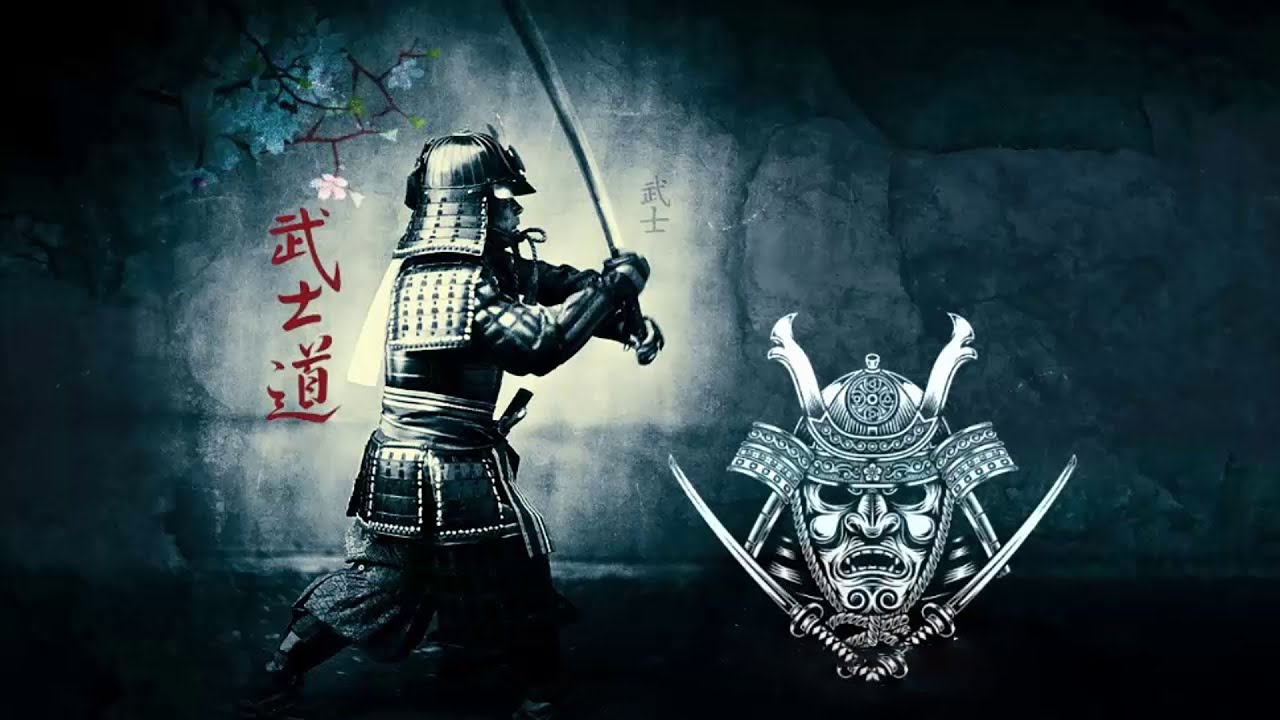

Der byzantinische Bilderstreit war eine Zeit der leidenschaftlichen theologischen Debatte in der orthodox-katholischen Kirche und dem byzantinischen Kaiserhaus während des frühen 8. und der Mitte des 9. Jahrhunderts, in der es um den richtigen Gebrauch und die Verehrung von Ikonen ging. Die beiden Parteien wurden in der späteren Betrachtung als Ikonoklasten (Ikonenzerstörer) und Ikonodulen (Ikonenverehrer) bezeichnet.
Jede Bewertung des Bilderstreits wird grundsätzlich durch den Umstand erschwert, dass die Schriften bilderfeindlicher Autoren nach dem Sieg der Ikonodulen von diesen vernichtet wurden. So sind als Quellen fast nur parteiische Darstellungen der Sieger erhalten, die die Motive der Bilderfeinde verzerrt und das Ausmaß der Zerstörungen übertrieben haben könnten. Die moderne Forschung revidiert viele Urteile der älteren Lehrmeinung.
—— 拜占庭的起源 ——
拜占庭之名原起于一座靠海的古希腊移民城市,公元 330年罗马皇帝君士坦丁一世在此建城,作为罗马帝国的陪都,并改名为君士坦丁堡。君士坦丁堡位于连接黑海到爱琴海之间的战略水道博斯普鲁斯海峡,扼制海 陆商业要道,地理位置十分优越。公元395年庞大的罗马帝国饱受各路蛮族侵扰,为便于管辖而将帝国一分为二,东部帝国即以君士坦丁堡为首府,因此东罗马帝 国又称为拜占庭帝国。
公元476年西罗马帝国在经历了包括匈奴和诸多日尔曼部落的反复侵袭之后终于咽下了最后一口气,拜占庭遂成为唯一的罗马人帝国——实际上他们一直以纯正罗马血统自居。
—— 战争和衰弱 ——
公元527年,拜占庭迎来了第一位强势的皇帝——查士丁尼一世。其随即任命名将贝利萨留为元帅,向夙敌波斯帝国宣战。公元528年波斯 军大将扎基西斯率3万大军,于次年在尼亚比斯以压倒性兵力逼退贝利萨留,隔年双方军队在两河流域的德拉城再次会战,贝利萨留的军队少到可怜……但波斯军队 犯了愚蠢的错误,他们背城列阵而且要命的是背的不是自己的城,于是多于对手数倍且装备精良的波斯军理所当然(或者匪夷所思)地惨败……随后波斯军一败再 败,但还是于531年卡尔基斯阻挡了贝利萨留的前进步伐,两国终于532年签下停战协议。随后雄心勃勃的查士丁尼再跟达尔旺人开战,贝利萨留出征非洲,可 怜的拜占庭远征军步骑兵总数连马都算上才2万还多个零头!更要命的是其中还包括了大半粗鲁且毫无组织纪律性可言的蛮族雇佣兵。搭船出海取道伯罗奔尼撒、途 经西西里一路磕磕碰碰,直到9月初才踏上非洲大地的贝利萨留不仅不知对手的实力到底是1万还是100万甚至连个详细点的地图都无,幸好当地愿意当向导赚小 费的人还算不少,贝利萨留终于在9月中旬在迦太基撞上达尔旺人的大军。人说强龙难压地头蛇,但贝利萨留却敢于在地头蛇门口大玩迷踪步,一番错综复杂的迂回 使达尔旺人的军队失去了有利地形并分散做几部失去了衔接,惨遭和当年的波斯军同样的命运。外强中干的达尔旺人此后再也没组织起任何一次较像样的反击,终于 534年3月投降,达尔旺王国灭亡。查士丁尼的非洲战役使拜占庭帝国控制了非洲广大的畜牧基地。 (Quelle:games.sina.com.cn/talk/0212/120913641.shtml)
拜占庭帝国是历史上一个著名的帝国。罗马帝国东西分治后,帝国东部延续被称为东罗马帝国(相对于帝国西部的西罗马帝国)。16世纪以后,开始有学者称之为“拜占庭帝国”,被视为新政权。其国民在帝国一千多年的期间仍自称为“罗马帝国”的公民(拉丁语:Imperium Romanum;希腊语:Βασιλεία Ρωμαίων)。帝国位于欧洲东南部,领土曾包括欧亚非三大洲的亚洲西部和非洲北部,是古典时代和中世纪欧洲历史上最悠久的君主制国家。
拜占庭帝国共历经12个王朝及93位皇帝,首都为新罗马(拉丁语:Nova Roma;希腊语:Νέα Ρώμη,即君士坦丁堡)。其疆域在11个世纪中不断变动。色雷斯、希腊和小亚细亚西部是帝国的核心地区;今日的土耳其、希腊、保加利亚、马其顿、阿尔巴尼亚从4世纪至13世纪是帝国领土的主要组成部分;意大利和原南斯拉夫的大部、伊比利亚半岛南部、叙利亚、巴勒斯坦、埃及、利比亚、突尼斯、今阿特拉斯山脉以北的阿尔及利亚和今天摩洛哥的丹吉尔也在7世纪之前曾是帝国的国土。
关于帝国的起始纪年,历史学界仍存有争议。主流观点认为,330年君士坦丁大帝建立新罗马、罗马帝国政治中心东移,是东罗马帝国成立的标志。德国东罗马学者斯坦因以戴克里先皇帝即位(284年;这位皇帝首次将罗马帝国分为东西两半分治)为东罗马帝国的起始纪年。其他观点分别以476年(西罗马帝国灭亡)、527年(查士丁尼一世登基)、7世纪(希腊化开始)和8世纪(希腊化完成)为东罗马帝国起始的标志。
东罗马帝国本为罗马帝国的东半部,较为崇尚希腊文化,与西罗马帝国分裂后,更逐渐发展为以希腊文化、希腊语和及后的东正教为立国基础,在620年,希拉克略皇帝首次让希腊语取代拉丁语,成为帝国的官方语言,使得东罗马帝国成为不同于古罗马和西罗马帝国的国家。在476年西罗马帝国灭亡前和神圣罗马帝国成立后,这个帝国被外人称为“东罗马帝国”,尽管其正式国号仍延续着古罗马帝国时期的国号。直到1557年德意志历史学家赫罗尼姆斯·沃尔夫为了区分其帝国的古罗马时期及神圣罗马帝国而引入了“拜占庭帝国”作为称呼,并被现代史学上所使用。
东罗马帝国的文化和宗教对于今日的东欧各国有很大的影响。此外,帝国在其十一个世纪的悠久历史中所保存下来的古典希腊和罗马史料、著作,以及理性的哲学思想,也为中世纪欧洲突破天主教会神权束缚提供了最直接的动力,引发了文艺复兴运动,并深远地影响了人类历史。
1204年4月13日,东罗马帝国首都君士坦丁堡曾被第四次十字军东征攻陷和劫掠,直到1261年收复。1453年5月29日,奥斯曼帝国攻陷了首都君士坦丁堡,末代皇帝君士坦丁十一世战死,历时一千余年的东罗马帝国就此灭亡,长达1480年的罗马帝国也正式终结。
Das Byzantinische Reich, verkürzt auch nur Byzanz, oder – aufgrund der historischen Herkunft – das Oströmische Reich bzw. Ostrom war ein Kaiserreich im östlichen Mittelmeerraum. Es entstand im Verlauf der Spätantike nach der so genannten Reichsteilung von 395 aus der östlichen Hälfte des Römischen Reiches. Das von der Hauptstadt Konstantinopel – auch „Byzanz“ genannt – aus regierte Reich erstreckte sich während seiner größten Ausdehnung Mitte des sechsten Jahrhunderts von Italien und der Balkanhalbinsel bis zur Arabischen Halbinsel und nach Nordafrika, war aber seit dem siebten Jahrhundert weitgehend auf Kleinasien und Südosteuropa beschränkt. Mit der Eroberung von Konstantinopel durch die Osmanen im Jahr 1453 endete das Reich.
Die Geschichte des Byzantinischen Reiches war von einem Abwehrkampf an den Grenzen gegen äußere Feinde geprägt, der die Kräfte des Reiches erheblich beanspruchte. Dabei wechselten sich bis in die Spätzeit, als das Reich keine ausreichenden Ressourcen mehr hatte, Phasen der Expansion (nach Gebietsverlusten im siebten Jahrhundert Eroberungen im zehnten und elften Jahrhundert) mit Phasen des Rückzugs ab. Im Inneren kam es (besonders bis ins neunte Jahrhundert) immer wieder zu unterschiedlich stark ausgeprägten theologischen Auseinandersetzungen sowie zu vereinzelten Bürgerkriegen, doch blieb das an römischen Strukturen orientierte staatliche Fundament bis ins frühe 13. Jahrhundert weitgehend intakt. Kulturell hat Byzanz der Moderne bedeutende Werke aus Literatur und Kunst hinterlassen. Byzanz spielte auch aufgrund des stärker bewahrten antiken Erbes eine wichtige Mittlerrolle. Hinsichtlich der Christianisierung Osteuropas, bezogen auf den Balkanraum und Russland, war der byzantinische Einfluss ebenfalls von großer Bedeutung.
東ローマ帝国(ひがしローマていこく、英語: Eastern Roman Empire[3])またはビザンツ帝国、ビザンティン帝国は、東西に分割統治されて以降のローマ帝国の東側の領域、国家である。ローマ帝国の東西分割統治は4世紀以降断続的に存在したが、一般的には最終的な分割統治が始まった395年以降の東の皇帝の統治領域を指す。西ローマ帝国の滅亡後の一時期は旧西ローマ領を含む地中海の広範な地域を支配したものの、8世紀以降はバルカン半島、アナトリア半島を中心とした国家となった。首都はコンスタンティノポリス(現在のトルコ共和国の都市であるイスタンブール)であった。
西暦476年に西ローマ帝国がゲルマン人の傭兵隊長オドアケルによって滅ぼされた際、形式上は最後の西ローマ皇帝ロムルス・アウグストゥスが当時の東ローマ皇帝ゼノンに帝位を返上して東西の帝国が「再統一」された(オドアケルは帝国の西半分の統治権を代理するという体裁をとった)ため、当時の国民は自らを古代のローマ帝国と一体のものと考えていた。また、ある程度の時代が下ると民族的・文化的にはギリシャ化が進んでいったことから、同時代の西欧からは「ギリシア帝国」とも呼ばれた。
The Byzantine Empire, also referred to as the Eastern Roman Empire and Byzantium, was the continuation of the Roman Empire in its eastern provinces during Late Antiquity and the Middle Ages, when its capital city was Constantinople (modern-day Fatih, İstanbul, and formerly Byzantium). It survived the fragmentation and fall of the Western Roman Empire in the 5th century AD and continued to exist for an additional thousand years until it fell to the Ottoman Turks in 1453.[2] During most of its existence, the empire was the most powerful economic, cultural, and military force in Europe. Both the terms "Byzantine Empire" and "Eastern Roman Empire" are historiographical exonyms; its citizens continued to refer to their empire simply as the Roman Empire (Greek: Βασιλεία Ῥωμαίων, tr. Basileia Rhōmaiōn; Latin: Imperium Romanum),[3] or Romania (Ῥωμανία), and to themselves as "Romans".[4]
Several signal events from the 4th to 6th centuries mark the period of transition during which the Roman Empire's Greek East and Latin West diverged. Constantine I (r. 324–337) reorganised the empire, made Constantinople the new capital, and legalised Christianity. Under Theodosius I (r. 379–395), Christianity became the Empire's official state religion and other religious practices were proscribed. Finally, under the reign of Heraclius (r. 610–641), the Empire's military and administration were restructured and adopted Greek for official use in place of Latin.[5] Thus, although the Roman state continued and its traditions were maintained, modern historians distinguish Byzantium from ancient Rome insofar as it was centred on Constantinople, oriented towards Greek rather than Latin culture, and characterised by Orthodox Christianity.[4]
The borders of the empire evolved significantly over its existence, as it went through several cycles of decline and recovery. During the reign of Justinian I (r. 527–565), the Empire reached its greatest extent after reconquering much of the historically Roman western Mediterranean coast, including North Africa, Italy, and Rome itself, which it held for two more centuries. The Byzantine–Sasanian War of 602–628 exhausted the empire's resources and contributed to major territorial losses during the Early Muslim conquests of the 7th century wherein it lost its richest provinces, Egypt and Syria, to the Arabs.[6] During the Macedonian dynasty (10th–11th centuries), the empire expanded again and experienced the two-century long Macedonian Renaissance, which came to an end with the loss of much of Asia Minor to the Seljuk Turks after the Battle of Manzikert in 1071. This battle opened the way for the Turks to settle in Anatolia.
The empire recovered again during the Komnenian restoration, and by the 12th century Constantinople was the largest and wealthiest European city.[7] However, it was delivered a mortal blow during the Fourth Crusade, when Constantinople was sacked in 1204 and the territories that the empire formerly governed were divided into competing Byzantine Greek and Latin realms. Despite the eventual recovery of Constantinople in 1261, the Byzantine Empire remained only one of several small rival states in the area for the final two centuries of its existence. Its remaining territories were progressively annexed by the Ottomans over the 14th and 15th century. The Fall of Constantinople to the Ottoman Empire in 1453 finally ended the Byzantine Empire.[8] The last of the imperial Byzantine successor states, the Empire of Trebizond, would be conquered by the Ottomans eight years later in the 1461 Siege of Trebizond.[9]
L’Empire byzantin ou Empire romain d'Orient désigne la civilisation apparue vers le IVe siècle dans la partie orientale de l'Empire romain, au moment où celui-ci se divise progressivement en deux.
L’Empire byzantin se caractérise par sa longévité. Il puise ses origines dans la fondation même de Rome, et la datation de ses débuts change selon les critères choisis par chaque historien. La fondation de Constantinople, sa capitale, par Constantin Ier en 330, autant que la division d’un Empire romain de plus en plus difficile à gouverner et qui devient définitive en 395, sont parfois citées. Quoi qu’il en soit, plus dynamique qu’un monde romain occidental brisé par les invasions barbares, l’Empire d’Orient s’affirme progressivement comme une construction politique originale. Indubitablement romain, cet Empire est aussi chrétien et de langue principalement grecque. À la frontière entre l’Orient et l’Occident, mêlant des éléments provenant directement de l’Antiquité avec des aspects innovants dans un Moyen Âge parfois décrit comme grec, il devient le siège d’une culture originale qui déborde bien au-delà de ses frontières, lesquelles sont constamment assaillies par des peuples nouveaux. Tenant d’un universalisme romain, il parvient à s’étendre sous Justinien (empereur de 527 à 565), retrouvant une partie des antiques frontières impériales, avant de connaître une profonde rétractation. C’est à partir du VIIe siècle que de profonds bouleversements frappent l’Empire byzantin. Contraint de s’adapter à un monde nouveau dans lequel son autorité universelle est contestée, il rénove ses structures et parvient, au terme d’une crise iconoclaste, à connaître une nouvelle vague d’expansion qui atteint son apogée sous Basile II (qui règne de 976 à 1025). Les guerres civiles autant que l’apparition de nouvelles menaces forcent l'Empire à se transformer à nouveau sous l'impulsion des Comnènes avant d’être disloqué par la quatrième croisade lorsque les croisés s'emparent de Constantinople en 1204. S’il renaît en 1261, c’est sous une forme affaiblie qui ne peut résister aux envahisseurs ottomans et à la concurrence économique des républiques italiennes (Gênes et Venise). La chute de Constantinople en 1453 marque sa fin.
Tout au long de son histoire millénaire, une continuité autant que des ruptures rythment l’existence de l’Empire byzantin, objet complexe à analyser dans sa diversité. Héritier d’une riche culture gréco-romaine, il la fait vivre et contribue à la transmettre à l’Occident au moment de la Renaissance. Il développe sa propre civilisation, profondément empreinte de religiosité. Pilier du monde chrétien, il est le défenseur d’un christianisme dit orthodoxe qui rayonne dans l’Europe centrale et orientale où son héritage est encore vivace aujourd’hui, tandis que la séparation des Églises d'Orient et d'Occident inaugure une rupture progressive avec le catholicisme romain.
Qualifié d’« archaïque » ou de « déclinant » dans l’historiographie ancienne, parfois empreinte de mishellénisme, l’Empire byzantin a fait preuve d’une remarquable capacité d’adaptation face aux évolutions du monde qui l’entoure et aux menaces qui l’assaillent constamment, souvent sur plusieurs fronts. Il parvient souvent habilement à user de la diplomatie autant que de la force pour contenir ses ennemis. Sa situation exceptionnelle, au carrefour entre l'Orient et l'Occident dont il contribue à brouiller les frontières, entre monde méditerranéen et bassin pontique, lui permet de développer une économie dynamique, symbolisée par sa monnaie, souvent utilisée bien au-delà de ses frontières. Cette même abondance suscite aussi les convoitises de voisins ambitieux qui se heurtent régulièrement aux puissantes murailles de Constantinople. Celle-ci, plus encore que Rome avec l’Empire romain antérieur, est le centre du monde byzantin. Même au moment de son déclin à partir de 1204, il préserve une vivacité culturelle qui favorise l’émergence de la Renaissance européenne.
Les jugements sur l’Empire byzantin ont profondément varié en fonction des époques. D’un exemple à suivre pour les régimes absolutistes du XVIIe siècle, il est vivement dénoncé en raison même de cet absolutisme et décrit comme décadent au XVIIIe siècle. Ces interprétations ont laissé place à des perspectives historiques plus scientifiques. L’héritage du monde byzantin est cardinal dans la compréhension du monde slave, auquel il a laissé un alphabet et une religion. Au-delà, il a su rayonner, transmettant un droit romain codifié, des chefs d’œuvre architecturaux incarnés par la basilique Sainte-Sophie et, plus largement, une culture originale.
Impero bizantino (395 d.C. - 1453) è il nome con cui gli studiosi moderni e contemporanei indicano l'Impero romano d'Oriente (termine che iniziò a diffondersi durante il regno dell'imperatore Valente), di cultura prevalentemente greca, separatosi dalla parte occidentale, di cultura quasi esclusivamente latina, dopo la morte di Teodosio I nel 395.
Il termine "bizantino" è stato introdotto solo a partire dal XVIII secolo dagli Illuministi, quando l'Impero Romano d'Oriente era ormai scomparso da circa tre secoli. "Romei" (dal greco: Ῥωμιός / Rōmiós) era il termine usato dagli stessi abitanti dell'Impero Romano d'Oriente per definirsi. Come l'Impero bizantino era di fatto Impero romano, così la sua capitale Costantinopoli era la Nuova Roma e così pure il titolo dei suoi sovrani era Basileús kaì Kaìsar ton romaíon (greco: Βασιλεὺς καὶ Καῖσαρ τῶν Ῥωμαίων), ovvero Sovrano e Cesare dei Romani. La stessa Penisola balcanica veniva chiamata dai Romei, Rumelia, nome di regione che sarà conservato pure dai conquistatori ottomani. Gli stessi ottomani utilizzeranno la parola Rūm (in arabo: الرُّومُ, al-Rūm), termine storicamente impiegato dai musulmani per indicare i Bizantini. I sultani ottomani, dopo la conquista di Costantinopoli, si assegneranno il titolo onorifico di qaysar-ı Rum, "Cesare dei Romani", mantenendo il nome di Qusṭanṭīniyya, fino al XX secolo, per la nuova capitale, che sostituiva l'antica anatolica Edirne (Adrianopolis).
Tuttavia per distinguerlo dall'Impero romano d'Occidente, si è preferito assegnare alla parte orientale il nome di "Impero bizantino". Non c'è accordo fra gli storici sulla data in cui si dovrebbe cessare di utilizzare il termine "romano" per sostituirlo con il termine "bizantino", anche perché entrambe le definizioni sono utilizzate da molti di loro, spesso indistintamente, per designare il mondo romano-orientale fino almeno al VII secolo. Le diverse impostazioni storiografiche condizionano anche la diversità di opinioni nella determinazione della datazione: taluni lo fanno coincidere con il 395 (separazione definitiva dei due imperi), ma si è anche proposto il 476 (fine dell'Impero Romano d'Occidente), il 330 (anno di inaugurazione della Nova Roma o Νέα Ῥώμη, fondata da Costantino I, copia fedele e nostalgica della prima Roma), il 565 (morte di Giustiniano I, ultimo imperatore di madrelingua latina e del suo sogno della Restauratio imperii). Alcuni storici prolungano il periodo propriamente "romano" fino al 610, anno dell'ascesa al trono di Eraclio I il quale modificò notevolmente la struttura dell'Impero, rendendo il greco lingua ufficiale al posto del latino.
Resta comunque il fatto che per gli imperatori bizantini e per i propri sudditi il loro impero si identificò sempre con quello di Augusto e Costantino I dal momento che "romano" e "greco" fino al XVIII secolo furono per essi sinonimi.
L'impero, dopo una lunga crisi, la sua distruzione da parte dei crociati nel 1204 e la sua restaurazione nel 1261, cessò definitivamente di esistere nel 1453 (conquista di Costantinopoli da parte dei Turchi ottomani guidati da Maometto II).
El Imperio bizantino o Bizancio fue la parte oriental del Imperio romano que pervivió durante toda la Edad Media y el comienzo del Renacimiento. Este imperio se ubicaba en el Mediterráneo oriental. Su capital se encontraba en Constantinopla (en griego: Κωνσταντινούπολις, actual Estambul), cuyo nombre más antiguo era Bizancio, importante ciudad de la Tracia griega fundada en el 650 a. C. También se conoce al Imperio bizantino como Imperio romano de Oriente, especialmente para hacer referencia a sus primeros siglos de existencia, durante la Antigüedad tardía, época en que el Imperio romano de Occidente todavía existía. Dado que el Imperio romano había establecido que la lengua en todo el territorio debía ser el griego, los historiadores en general coinciden en señalar que el Imperio bizantino fue un imperio griego en alianza política con Roma.23
A lo largo de su dilatada historia, el Imperio bizantino sufrió numerosos reveses y pérdidas de territorio, especialmente durante las guerras romano-sasánidas, guerras bizantino-normandas y las guerras árabo-bizantinas. Aunque su influencia en África del Norte y Oriente Próximo había entrado en declive como resultado de estos conflictos, continuó siendo una importante potencia militar y económica en Europa, Oriente Próximo y el Mediterráneo oriental durante la mayor parte de la Edad Media. Tras una última recuperación de su pasado poder durante la época de la dinastía Comneno, en el siglo XII, el Imperio comenzó una prolongada decadencia durante las guerras otomano-bizantinas que culminó con la toma de Constantinopla y la conquista del resto de los territorios bajo dominio bizantino por los turcos, en el siglo XV.
Durante su milenio de existencia, el Imperio fue un bastión del cristianismo, e impidió el avance del islam hacia Europa Occidental. Fue uno de los principales centros comerciales del mundo, estableciendo una moneda de oro estable que circuló por toda el área mediterránea. Influyó de modo determinante en las leyes, los sistemas políticos y las costumbres de gran parte de Europa y de Oriente Medio, y gracias a él se conservaron y transmitieron muchas de las obras literarias y científicas del mundo clásico y de otras culturas.
En tanto que es la continuación de la parte oriental del Imperio romano, su transformación en una entidad cultural diferente de Occidente puede verse como un proceso que se inició cuando el emperador Constantino I el Grande trasladó la capital a la antigua Bizancio (que entonces rebautizó como Nueva Roma, y más tarde se denominaría Constantinopla); continuó con la escisión definitiva del Imperio romano en dos partes tras la muerte de Teodosio I, en 395, y la posterior caída en 476 del Imperio romano de Occidente; y alcanzó su culminación durante el siglo VII, bajo el emperador Heraclio I, con cuyas reformas (sobre todo, la reorganización del ejército y la adopción del griego como lengua oficial), el Imperio adquirió un carácter marcadamente diferente al del viejo Imperio romano. Algunos académicos, como Theodor Mommsen, han afirmado que hasta Heraclio puede hablarse con propiedad del Imperio romano de Oriente y más adelante de Imperio bizantino, que duró hasta 1453, ya que Heraclio sustituyó el antiguo título imperial de «augusto» por el de basileus (palabra griega que significa 'rey' o 'emperador') y reemplazó el latín por el griego como lengua administrativa en 620, después de lo cual el Imperio tuvo un marcado carácter helénico.
En todo caso, el término Imperio bizantino fue creado por la erudición ilustrada de los siglos XVII y XVIII y nunca fue utilizado por los habitantes de este imperio, que prefirieron denominarlo siempre Imperio romano (griego: Βασιλεία Ῥωμαίων, Basileia Rhōmaiōn; latín: Imperium Romanum) o Romania (Ῥωμανία) durante toda su existencia.
Византи́я, Византи́йская импе́рия, Восто́чная Ри́мская импе́рия, самоназвание Держава Ромеев, Ромейская империя (395[~ 2]—1453) — государство, сформировавшееся в 395 году вследствие давления гуннов на Римскую империю, после смерти императора Феодосия I, распавшееся на западную и восточную части. Чуть больше чем через восемьдесят лет после раздела Западная Римская империя прекратила своё существование, оставив Византию исторической, культурной и цивилизационной преемницей Древнего Рима на протяжении почти десяти столетий истории Поздней Античности и Средневековья[1][2].
Бессменной столицей и цивилизационным центром Византийской империи был Константинополь[3], один из крупнейших городов средневекового мира V—XII вв. Наибольшие владения империя контролировала при императоре Юстиниане I (527—565), вернув себе на несколько десятилетий значительную часть прибрежных территорий бывших западных провинций Рима и положение самой могущественной средиземноморской державы. В дальнейшем под натиском многочисленных врагов государство постепенно утрачивало земли. После славянских, лангобардских, вестготских и арабских завоеваний империя занимала лишь территорию Греции и Малой Азии. Некоторое усиление в IX—XI веках сменилось серьёзными потерями в конце XI века, во время нашествия сельджуков, и поражения при Манцикерте, усилением при первых Комнинах, после распада страны под ударами крестоносцев, взявших Константинополь в 1204 году, очередным усилением при Иоанне Ватаце, восстановлением империи Михаилом Палеологом, и, наконец, окончательной гибелью в середине XV века под натиском османов.

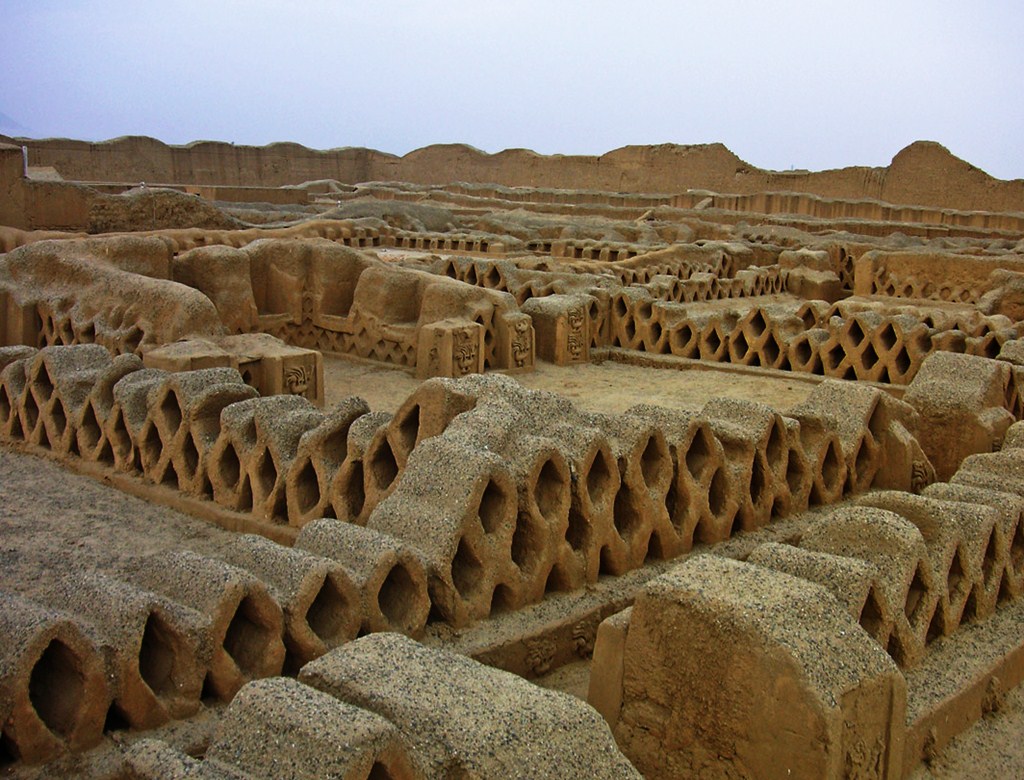

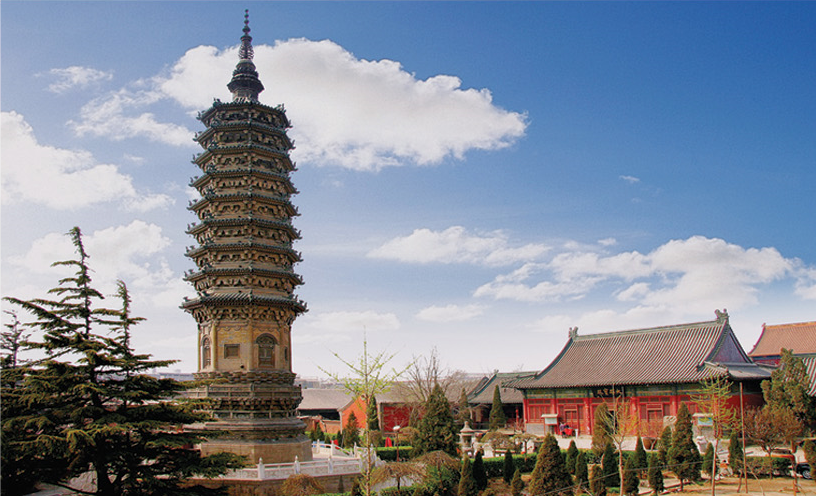

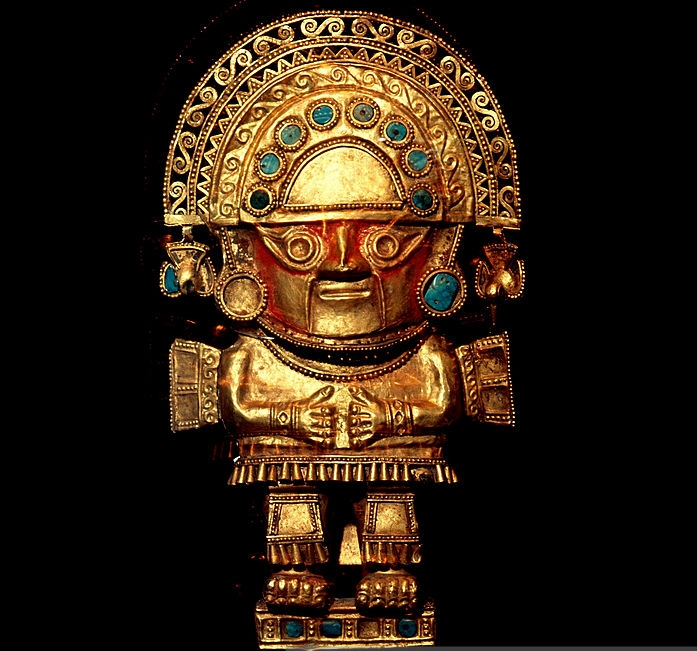
Die Chimú-Kultur setzte sich in der Zeit von 1250 bis 1470 im Norden von Peru in der Gegend um die Stadt Trujillo durch. Zur Zeit der größten Ausdehnung reichte ihr Einfluss im Norden bis zur Grenze von Ecuador und im Süden bis Lima. Ihre Hauptstadt Chan Chan soll zu ihrem Höhepunkt über 100.000 Einwohner beherbergt haben und war die größte Stadt auf dem südamerikanischen Kontinent.[1]
Um 1470 wurde der letzte König Minchancaman durch den Inka-Herrscher Túpac Yupanqui besiegt, das Chimúreich erobert und in den Inkastaat eingegliedert.

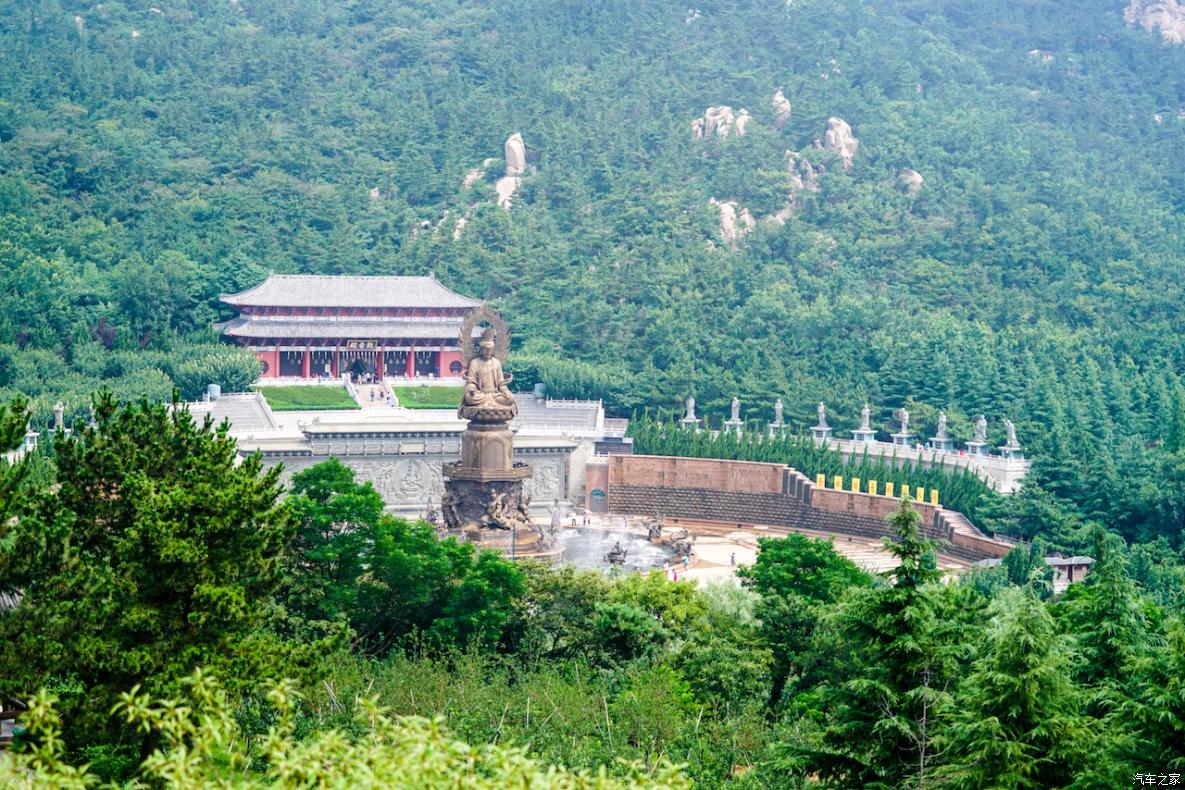

 Architecture
Architecture
 History
History

 Murcia
Murcia

 Eat and Drink
Eat and Drink
 World Heritage
World Heritage
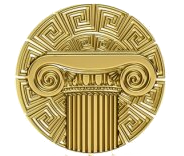 Civilization
Civilization

 Religion
Religion